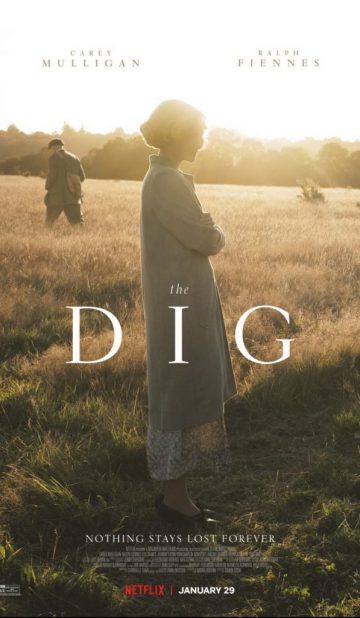The Reel Review
Carey Mulligan and Ralph Fiennes star in this Netflix historical drama about Edith Pretty, the Suffolk, England widow who hired self taught archeologist Basil Brown to excavate mysterious formations on her land on the eve of the start of World War II. The resulting 1939 Sutton Hoo discovery of a massive seventh century Anglo-Saxon ship burial site is hailed as Britain’s “Tutankhamen” – one of the world’s most important archeological discoveries.
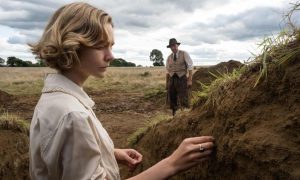
The Dig is a slow moving, tender drama, its protagonists literally and figuratively digging through the past to find meaning in life during a tumultuous time in history. Using a poignant, understated score and beautiful cinematography, director Simon Stone poetically lets his film breathe, yielding performances from Fiennes and Mulligan as the often underestimated duo that make you feel like you are right there with them. As Basil makes his discovery, throngs of archeologists descend, seeking a piece of the action.
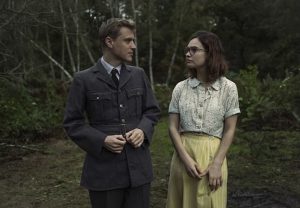
The first half of the film, focusing primarily on Mulligan (Promising Young Woman) and Fiennes (Schindler’s List), is its strongest – a fascinating dynamic of two people who share a passion for knowledge, but have been thwarted through unfortunate life circumstances. The second half, which focuses on a fictionalized love affair between newcomer archeologists played by Lily James (Cinderella, Mamma Mia! Here We Go Again) and Johnny Flynn (Emma.) as Edith Pretty’s fictional cousin, feels a bit contrived, despite stirring, heartfelt performances from each. For those with the patience to appreciate it, The Dig is a beautiful story with a lot to say in an understated way.
REEL FACTS
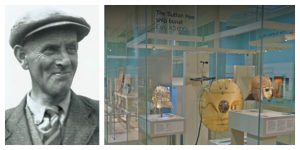
• The King’s Mound treasure of more than 260 items, including weapons, armor, coins, jewelry and cutlery, currently is displayed at the British Museum in London in Room 41: Sutton Hoo and Europe, AD 300-1100.
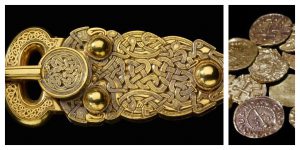
• A seventh century gold belt buckle found at the site, popular with Germanic-speaking people of the era, was made using 400g of gold with an intricate decoration of intertwining creatures inlaid with a niello, a black metal alloy. Inside a nearby purse were gold coins and ingots dating from AD 610-635.
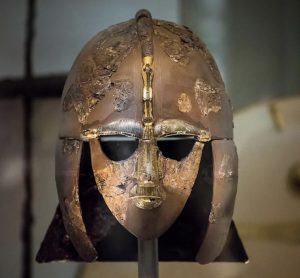
• The iconic Sutton Hoo helmet, with its vaulted cap and deep cheek pieces, was carefully reconstructed from shattered pieces found at the excavation site. The helmet’s mouth, nose and eyebrows form the image of a flying beast.


